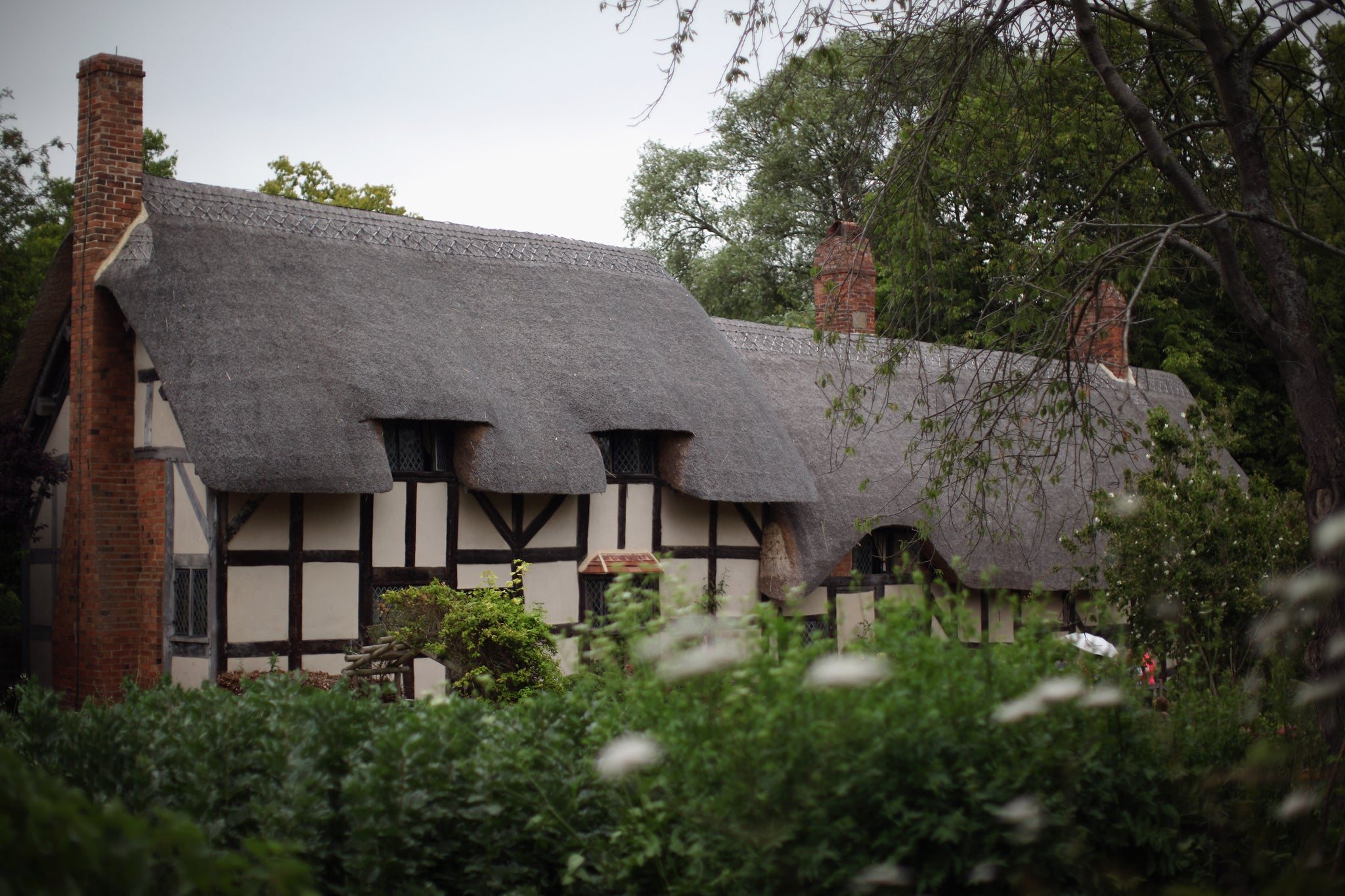Anne Hathaway's house at risk from housing development
Campaigners are fighting to preserve the cottage where William Shakespeare courted his bride

Your support helps us to tell the story
From reproductive rights to climate change to Big Tech, The Independent is on the ground when the story is developing. Whether it's investigating the financials of Elon Musk's pro-Trump PAC or producing our latest documentary, 'The A Word', which shines a light on the American women fighting for reproductive rights, we know how important it is to parse out the facts from the messaging.
At such a critical moment in US history, we need reporters on the ground. Your donation allows us to keep sending journalists to speak to both sides of the story.
The Independent is trusted by Americans across the entire political spectrum. And unlike many other quality news outlets, we choose not to lock Americans out of our reporting and analysis with paywalls. We believe quality journalism should be available to everyone, paid for by those who can afford it.
Your support makes all the difference.Is this a digger I see before me? The picturesque cottage where Anne Hathaway was wooed by her future husband William Shakespeare has become the focus of a legal battle as local councillors and campaigners fight a Government decision to green light the development of 800 houses nearby.
The Stratford-on-Avon District Council has lodged a legal challenge to protect the area’s natural beauty after communities and local government secretary Eric Pickles approved plans to build close to the thatched farmhouse in Shottery, Anne Hathaway’s family home.
The fight to preserve the Grade 1 listed cottage and its nearby environment has been running for over a decade, but intensified two weeks ago after Mr Pickles approved the plan drawn up by developer Bloor Homes and Hallam Land Management.
The decision came despite Stratford-on-Avon council’s unanimous rejection of the plans, protests including a petition with 800 signatures, one for every house in Shottery and opposition from the Shakespeare Birthplace Trust, which owns part of the land the developers need to complete the project.
The cottage itself is not under direct threat although campaigners believe its gardens will be strongly affected, with the new road increasing the noise pollution and increasing the threat of flooding
Gordon Brace a campaigner with The Residents against Shottery Expansion (RaSE) said: “One of the attractions of the cottage is the wonderful Elizabethan garden and the orchard” adding it would be “severely affected” by the plans.
He criticised the number of houses planned as well as the scheme the developers came up with to potentially mask the road that would run across the land. The plan to build up earth to hide it would make the cottage more vulnerable to flash floods, he said.
The Birthplace Trust is now studying the Government’s findings, and checking the evidence provided by the official inspector to the site who proposed there would cause “less than substantial harm to the cottage”.
Peter Kyle, the chairman of the Trust, said: “We have been objectors since the outset, it is a deeply loved part of the collection of houses in our control,” but added that the organisation would take no action until the outcome of the council’s legal challenge.
The trustees “are well aware of the feelings of the local community,” Mr Kyle after meeting with residents, and receiving documents they had compiled about the cottage.
Those behind the Save Shottery campaign, set up in the wake of the Government green light, called the decision one of “global, historical and environmental importance”.
Co-founder Debbie Griffiths said: “The cottage has a huge importance for the Shakespeare story, it’s an iconic property. We want to get this stopped.” She called on the Trust to refuse a sale to the developers, calling on the trustees to be “real heroes”.
Among the residents who support the campaign, Rob Silk warned: “The beauty of the most important cultural sites in the country will be badly affected and local people do not want this.”
While little is known about Hathaway’s life, she married the Bard in 1582 and the couple had three children. She died in 1623, seven years after her husband. Some academics claim that sonnet 145 references her.
Join our commenting forum
Join thought-provoking conversations, follow other Independent readers and see their replies
Comments